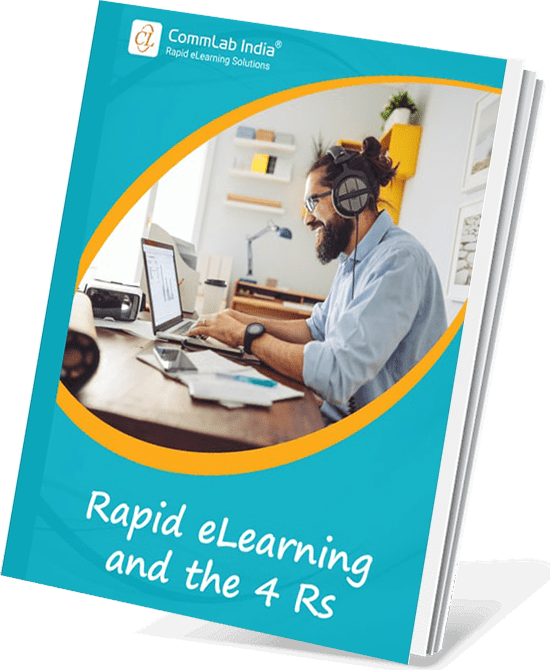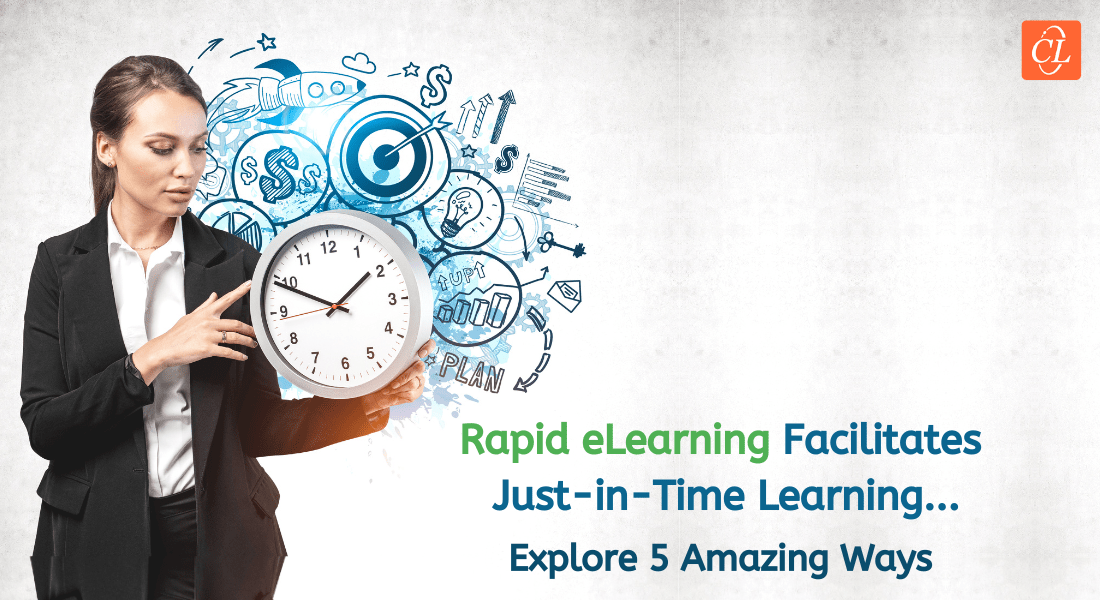What Are the Different Types of eLearning?

ELearning enables the learners to learn anytime and anywhere. It enables the development of perfect learning content through the application of sound instructional design principles to perfectly analyze the basic requirements of learning as well as learning objectives. Fundamentally, there are two categories of eLearning: synchronous and asynchronous. In this blog, we’ll learn about each one of them in detail.
→ Download Now: Rapid eLearning — The 4 Rs for Corporate Training Success
Table of Contents
- What is eLearning?
- What Are the Benefits of eLearning in Corporate Training?
- What Are the Types of eLearning?
What is eLearning?
eLearning, also known as electronic learning, uses digital platforms, tools, and resources to provide information and training to employees. It includes various formats such as online courses, webinars, virtual classrooms, interactive modules, and digital assessments. Each format offers different ways to learn and engage with the content.
What Are the Benefits of eLearning in Corporate Training?
Cost-Effective
By allowing employees to access training materials from their own desks, companies can eliminate the need for costly travel and accommodation expenses. This not only saves money but also increases convenience for employees. Additionally, eLearning allows organizations to utilize digital learning materials instead of physical copies, thus helping them save printing and distribution costs. This cost-effective approach not only benefits the company's bottom line but also contributes to a more sustainable and environmentally friendly training program.
Flexibility and Convenience
Flexibility and convenience are another key benefits of using eLearning for corporate training. Employees have the freedom to learn at their own pace, enabling them to effectively manage their training alongside their work duties. Furthermore, the anytime, anywhere access to training materials is particularly advantageous for remote or geographically distributed teams, as it eliminates the need for physical presence in a traditional classroom setting.

Have You Met the 4 Rs of Rapid eLearning?
Accelerate Learning and Maximize its Impact With the 4 Rs of Rapid eLearning!
4Rs of rapid eLearning:
- Redesign
- Record
- Rebuild
- Republish
Consistency and Standardization
With eLearning, organizations can rest assured about delivering a uniform training content. All employees receive the same information, leading to consistent knowledge and skills throughout the organization. Moreover, digital courses can be easily updated to reflect new information, ensuring that the training material remains current and relevant. This allows for a more efficient and effective learning experience for employees.
Enhanced Engagement and Retention
In order to enhance learner engagement and knowledge retention in training programs, it is essential to incorporate interactive and multimedia elements. It becomes an easy task in eLearning as instructional designers can include elements like videos, audio, game-based elements, infographics, simulations, animations, and more. This not only keeps learners interested and attentive in the learning process but also improves information retention.
Personalized Learning Experience
The concept of a personalized learning experience is revolutionizing the way employees acquire new information and develop skills. eLearning platforms support adaptive learning paths that utilize data to customize the learning journey for each individual, offering tailored recommendations and feedback. eLearning also makes it easier for learners, training managers, and instructors to track the progress. Based on the performance of learners, instructors can modify their instructional delivery methods and offer additional support and guidance when needed.
Watch this video to explore how ChatGPT can help you create effective personalized learning experiences.
Scalability
Scalability in eLearning allows for the seamless deployment of training to a large number of employees spread across various locations. This eliminates the logistical hurdles that come with traditional classroom training, making it a more efficient and cost-effective solution.
By leveraging eLearning, organizations can streamline their approach to corporate training for desirable training outcomes.
What Are the Types of eLearning?
What Are the Different Types of eLearning?
- Synchronous eLearning
- Asynchronous eLearning
- Blended Learning
Synchronous eLearning (Fixed time)
Imagine a classroom setting, but online! Synchronous eLearning is real-time learning. In synchronous learning, the learners and the instructor need to be online at the same time and often interact from different locations. It takes place via digital platforms like Zoom, Skype, Microsoft Teams, etc. Participants can actively share ideas, ask questions, and get immediate feedback. This interactive format fosters a sense of community and keeps learners engaged.

Asynchronous eLearning (Learner-centric, self-paced learning)
Asynchronous eLearning is a learner-centric approach to corporate training as it supports self-paced learning allowing individuals to access materials and complete activities on their own schedule. This flexibility is perfect for individuals with busy work schedules, as they can learn anytime, anywhere, seamlessly fitting into their daily routine. Moreover, the ability to review and revisit materials at one's own pace enables a deeper understanding and better application of concepts among the learners.

Blended Learning
Blended learning, also known as hybrid learning, is an innovative approach that merges the strengths of traditional classroom instruction with the flexibility and accessibility of online learning. This dynamic approach doesn't replace face-to-face interaction; instead, it strategically supplements it with online resources and activities.
Learners gain foundational knowledge and complete self-paced modules online, while in-person sessions provide opportunities to solidify understanding through practical application, group discussions, and instructor guidance. This blend of online and offline elements caters to diverse learning styles, keeping learners engaged and fostering deeper comprehension of the material.
Parting Thoughts!
Both synchronous and asynchronous eLearning offer distinct advantages for learners. Synchronous learning provides a dynamic and interactive experience, while asynchronous learning prioritizes flexibility and self-paced mastery. The ideal approach often depends on individual learning styles, schedules, and course content. The best eLearning programs may even combine elements of both, creating a well-rounded and engaging learning experience. If you wish to create high-quality, engaging eLearning courses quickly, then rapid eLearning is worth knowing about. Check out our eBook to learn about the 4Rs of rapid eLearning.
Editor's note: This post was originally published on June 03, 2014 and has been updated for comprehensiveness.



![Top 5 Blended Learning Formats for Software Training [Infographic]](https://blog.commlabindia.com/hubfs/blogs/Top%205%20Blended%20Learning%20Formats%20for%20Software%20Training.jpg)

